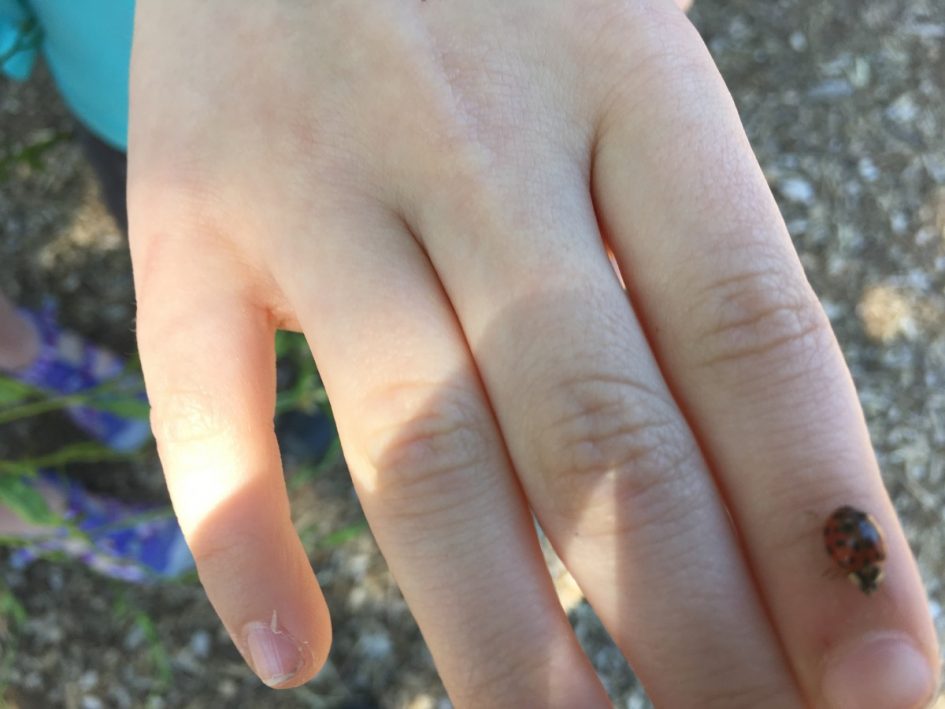CASCADIA ELEMENTARY 3RD GRADE GARDEN PROGRAM
Unfortunately this week the other garden intern, Jessica, was out sick. Usually the teacher floats around between activity groups, aiding us in behavior management while Rowan, Jessica, and I lead activities of about 8 students. We thought about breaking into two activity groups of about 13 students each, but instead did three, utilizing the teacher to lead a ‘sit spot’ activity in the perennial garden. I realized at this point how hard this job would be to lead a garden class of 26 students plus by yourself. No wonder Rowan employs interns to aid her!
Everything went really smoothly though.. This week it was time to give a little fertilizer in the annual garden which I lead. We also had to water a plethora of plants because the garden seemed to get a little neglected over the week without any waterings. For the fertilizer we used OMRI approved (because our garden is organic) liquid fish fertilizer. I allowed the students to smell it, and they all recoiled at the smells! Screaming “EWW!” I couldn’t blame them though, you could smell the fish all the way across the garden. Some of the kids didn’t want to touch the water mixture of fish fertilizer, and after making such a statement that lead other students not wanting to take part in using it either, but I had to tell them it had to get done and that it wouldn’t hurt them in any way if it got on their skin. After some reluctance they finally gave in, and like champs got it done! The tomatoes were dying for some food, and I have a feeling by week 10 during one of our potlatches we will have some juicy tomatoes already!
Before we got into the garden to get chores done, Rowan gave a little lesson on lady bugs. She brought a container of about 1,000 ladybugs. Telling their origin story, lady bugs typically breed in southern California and Nevada in huge quantities. Ladybug herders will then go out and collect them in the millions and sell them across the country! The kids were fascinated by this story and all wanted to go home, tell their parents, and buy some to release, whether or not they had a garden at home! The kids looked at them under magnifying boxes and then released them into the annual garden and perennial garden.
Tiny Trees Outdoor Preschool
This week I took on an extra activity. Obviously with Tiny Trees being an outdoor preschool the whole idea is to not have any building, so where do they store their stuff? Well, Jefferson Park Tiny Tree’s classroom has a Knack box that they keep everything in! It is about 4′ wide, 2′ deep, and 5′ tall. Everything from toys, books, first aid, lessons, ropes and other tools, all fit in this storage unit for two classes of preschoolers of 16 students each. I came on the weekend to organize and make a list of inventory, documenting every things count and condition. I expected it to take only about an hour or so, but I ended up being there much much longer, about 5 hours! I was shocked at the amount of effort it took. In the coming weeks I will also have to take the documentation and post it online. Effective time management will be key…
Besides doing the inventory, I participated in the classroom as well. This week I was able to apply some of my garden knowledge at the Beacon Hill Food Forest with the preschoolers, as we planted tomatoes, sorrel, and borage. The Tiny Trees preschool has their own garden plot at BHFF, I am intrigued by this relationship between the two organizations. Being involved with both organizations is quite fun and really brings life to the garden space with the kids, and the kids get to learn valuable lessons as well.
Tilth Alliance Garden Educator workshop
“Eat”
For my final workshop at Seattle Tilth we focused much on how to maintain a garden through un-used times, such as the summer. We discussed ways it may still stay relevant such as through summer programs, encouraging members of the school to come by during the summer to harvest and care, or getting community members in the near by neighborhood to come by and aid in it’s upkeep.
We made some big progress at Seattle Tilth’s learning garden in Wallingford. Us educators in training worked to construct some really cool structures such as a tunnel for squash to grow over and thus the kids can crawl under and pick hanging squash. We also built a high hoop house, that the kids can easily walk into, not so much an adult though.
We also went over some bureaucratic information, such as what the city of Seattle does and does not allow. Such as fruit trees are not allowed, and nor are irrigation systems that are automatic allowed. Fruit trees bring pests and if something goes wrong with the watering system the city does not want to be stuck with the bill. This all seems like boring know how but is vital to operate effectively with schools and stay on good terms with the city.

Leave a Reply